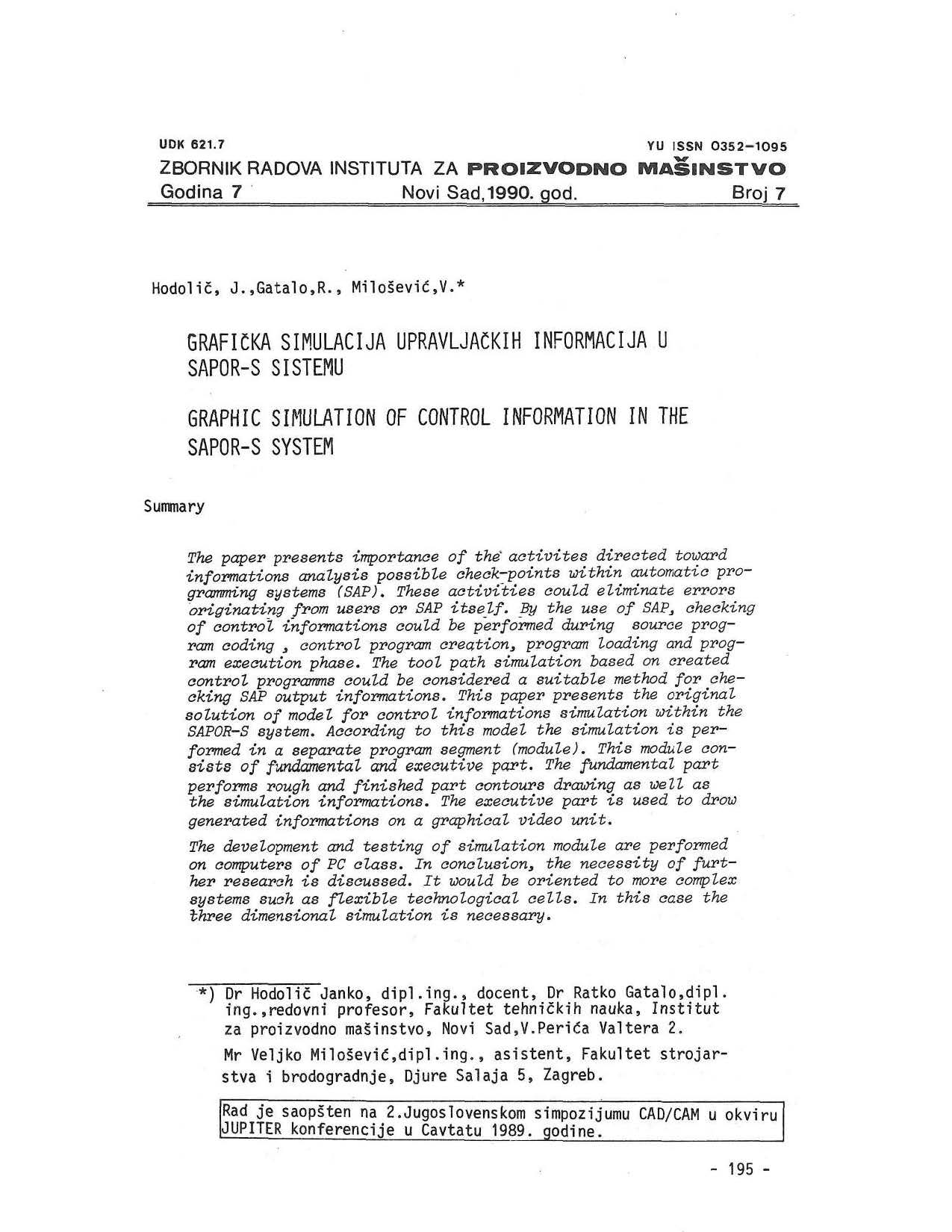
Published 1990-12-01
abstract views: 15 // FULL TEXT ARTICLE (PDF): 5
Keywords
- SAP,
- control information,
- SAPOR
How to Cite
Copyright (c) 2023 Journal of Production Engineering

This work is licensed under a Creative Commons Attribution 4.0 International License.
Abstract
This paper emphasizes the significance of activities aimed at analyzing information and verifying possible checkpoints within automatic programming systems (SAP). These activities are crucial for identifying and rectifying errors originating from either users or the SAP itself. When using SAP, the verification of control information can take place at various stages, including during source program coding, control program creation, program loading, and program execution. Tool path simulation, based on the control programs created, serves as a valuable method for checking the SAP output information. This paper introduces an innovative model for simulating control information within the SAPOR-S system. According to this model, the simulation is executed within a separate program segment or module. This module is divided into two parts: the fundamental part, responsible for generating rough and finished part contours, as well as simulation data, and the executive part, used for displaying the generated information on a graphical video unit. The development and testing of the simulation module have been carried out on personal computers (PCs). In conclusion, the paper underscores the need for further research, particularly in more complex systems like flexible technological cells, where three-dimensional simulation becomes essential.

